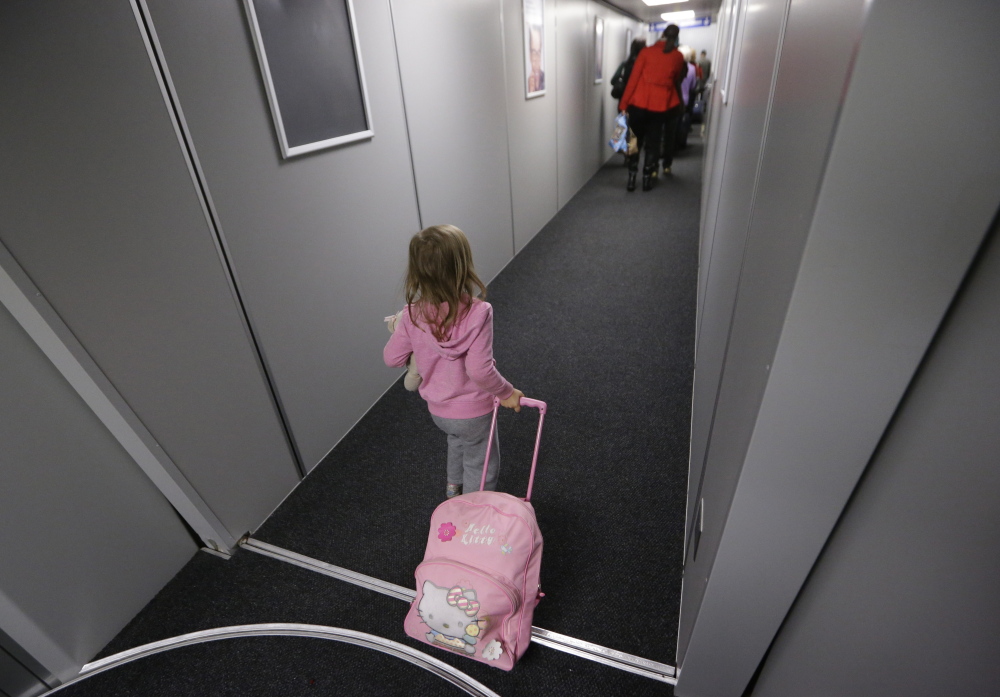DALLAS — For years, Southwest was the most punctual of big U.S. airlines, so its tumble toward the bottom of government rankings for on-time arrivals was stunning.
Southwest officials needed to fix an ill-fated decision to squeeze more flights into the schedule. This summer, they backed off by allowing more time between flights. And they told employees that the first flight of the day on every route had to leave on time.
“If you’re late out of the driveway in the morning, you’re probably going to be a little bit late to work,” says Steve Hozdulick, Southwest’s senior director of operational performance. “You’re going to hit the two traffic lights that you never hit.”
In the airline world, delays build as the day wears on. This summer, for example, airlines were on time around 85 percent or better until midmorning. By midafternoon, the rate dropped into the low 70s, then plunged into the 60s by dinner time.
Delays are costly for airlines and their passengers. A 2010 study commissioned by the Federal Aviation Administration estimated that flight delays cost the airline industry $8 billion a year, much of it due to increased spending on crews, fuel and maintenance. Delays cost passengers even more – nearly $17 billion.
In the first nine months of the year, more than 1 million U.S. airline flights arrived late – about one in five. Tardiness creates other problems including missed connections, lost bags and short tempers among frustrated travelers.
On a freezing morning recently at Dallas Love Field, Southwest supervisors showed up at 4 a.m., two hours before the first flights. They’ll assign two or more bag handlers to each flight.
The last bag should be on the plane and the bin doors closed five minutes before scheduled departure, says Dave Obeso, a Southwest ramp supervisor.
The pilots for Flight 454 to Phoenix inspected their Boeing 737 in the dark. Workers called “ops agents” calculated load weight and balance and completed paperwork. A fueler gassed up the jet. Inside the terminal, agents at Gate 12 started boarding the 136 passengers – they’re supposed to close the aircraft door five minutes before scheduled departure.
And then, a snag. A broken communications radio. A replacement was ordered and installed, a tug pushed the plane back from the gate, and the pilots taxied into position for takeoff. But the damage had been done.
Flight 454 left 29 minutes behind schedule and arrived in Phoenix 34 minutes late. Southwest’s control center relayed word of the delay to Phoenix employees, who “turned” the aircraft faster than normal before its next flight. Still, the plane remained nine to 28 minutes behind schedule for the remaining four flights of the day, according to the tracking service FlightAware.com.
As recently as 2009, Southwest led the big airlines in on-time arrivals, which the government defines as within 14 minutes of schedule.
Delta went from worst to first among the biggest airlines in 2011 and has stayed there ever since. Dave Holtz, senior vice president of operations, credited schedule changes, monthly bonuses of up to $100 per employee for hitting on-time and other goals.
“The key is to not let yourself fall behind,” Holtz says.
Copy the Story LinkSend questions/comments to the editors.



Success. Please wait for the page to reload. If the page does not reload within 5 seconds, please refresh the page.
Enter your email and password to access comments.
Hi, to comment on stories you must . This profile is in addition to your subscription and website login.
Already have a commenting profile? .
Invalid username/password.
Please check your email to confirm and complete your registration.
Only subscribers are eligible to post comments. Please subscribe or login first for digital access. Here’s why.
Use the form below to reset your password. When you've submitted your account email, we will send an email with a reset code.